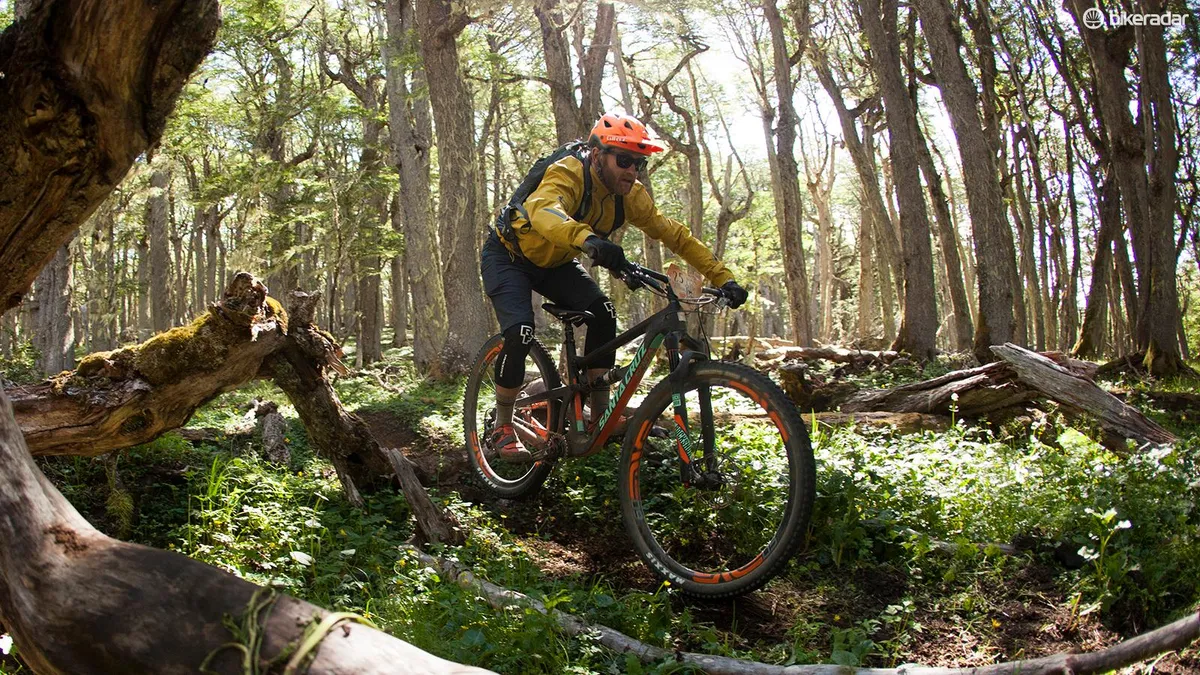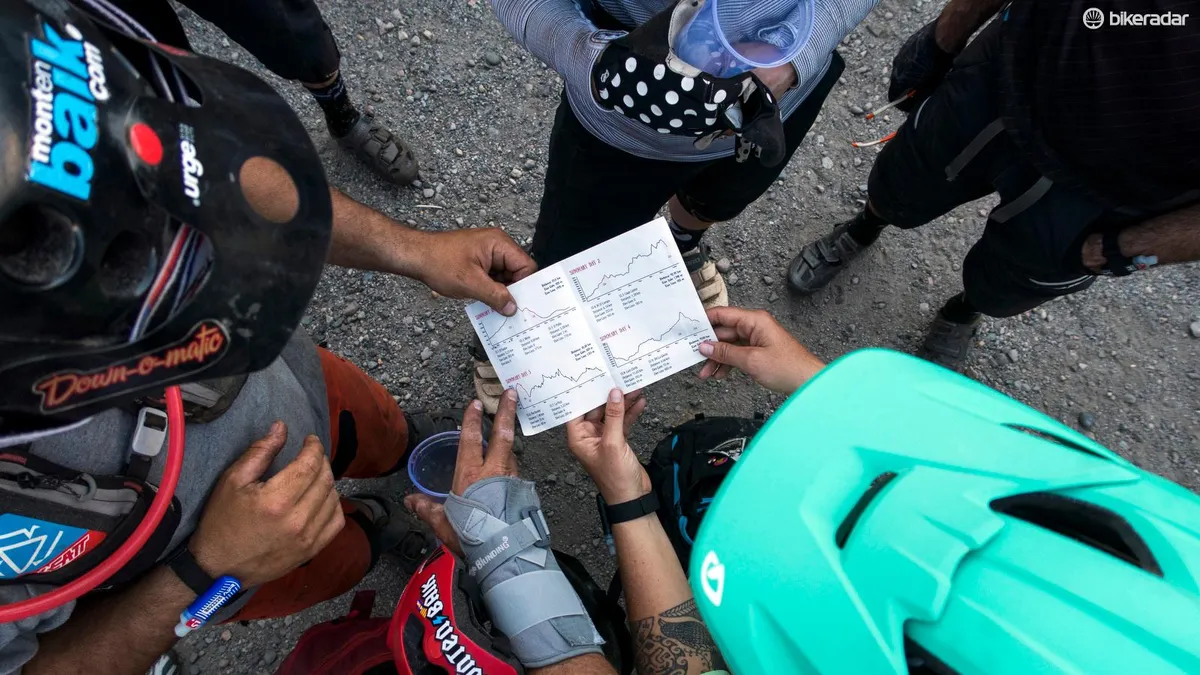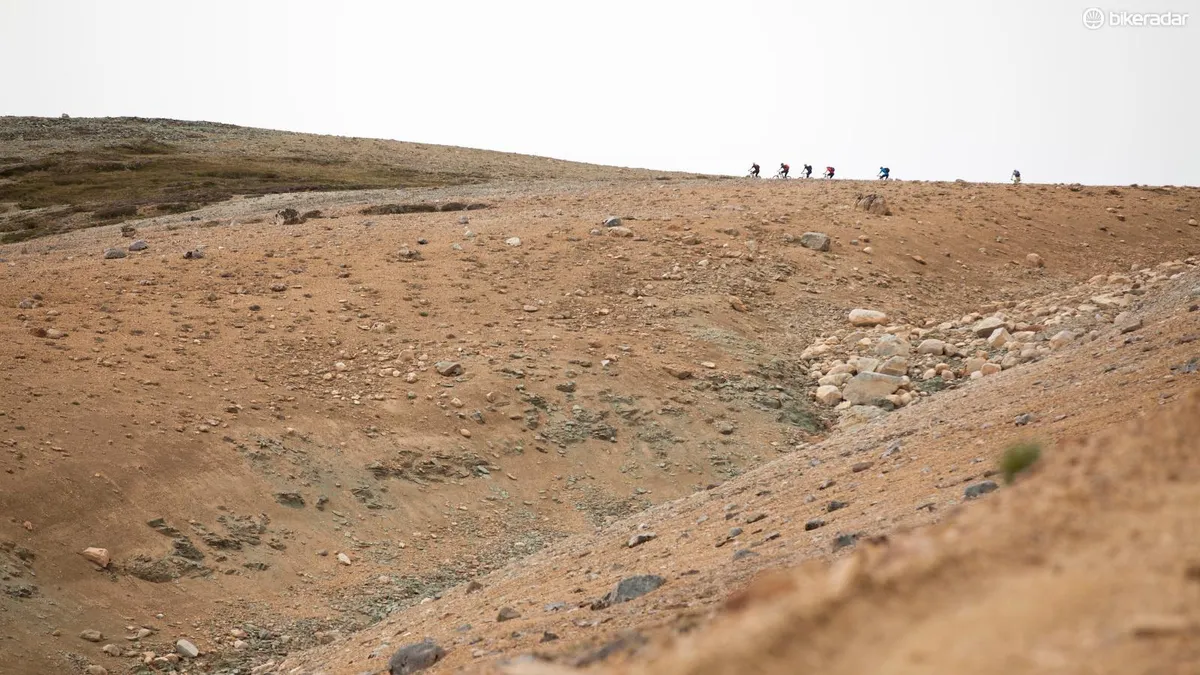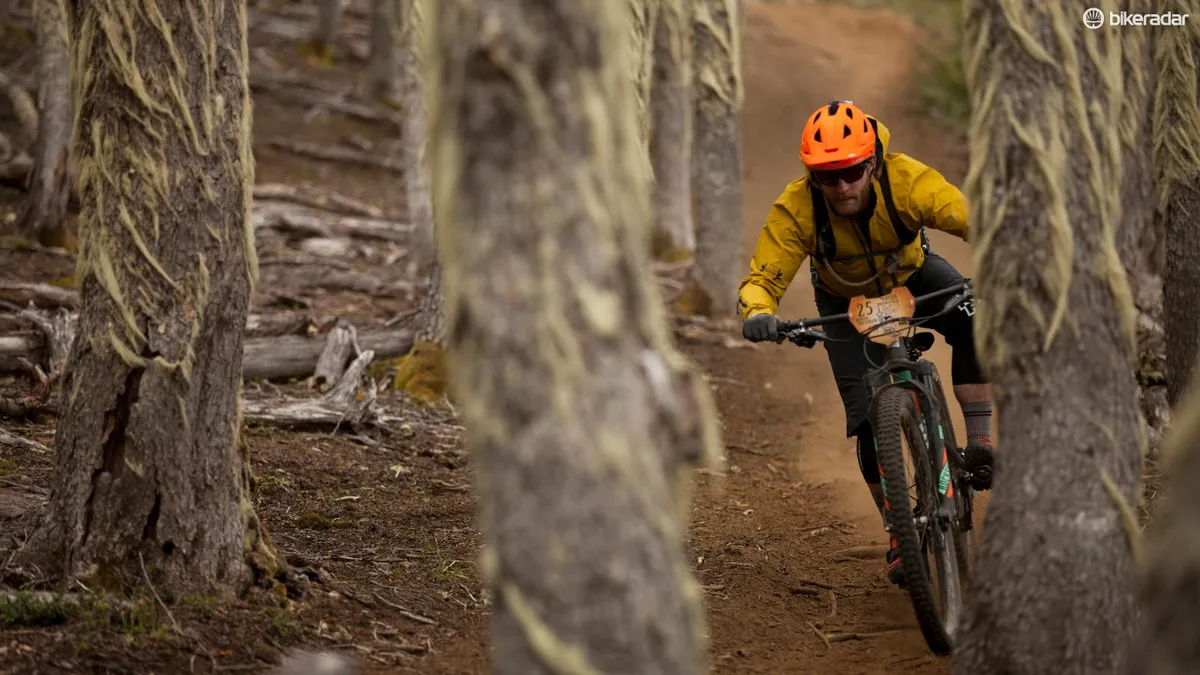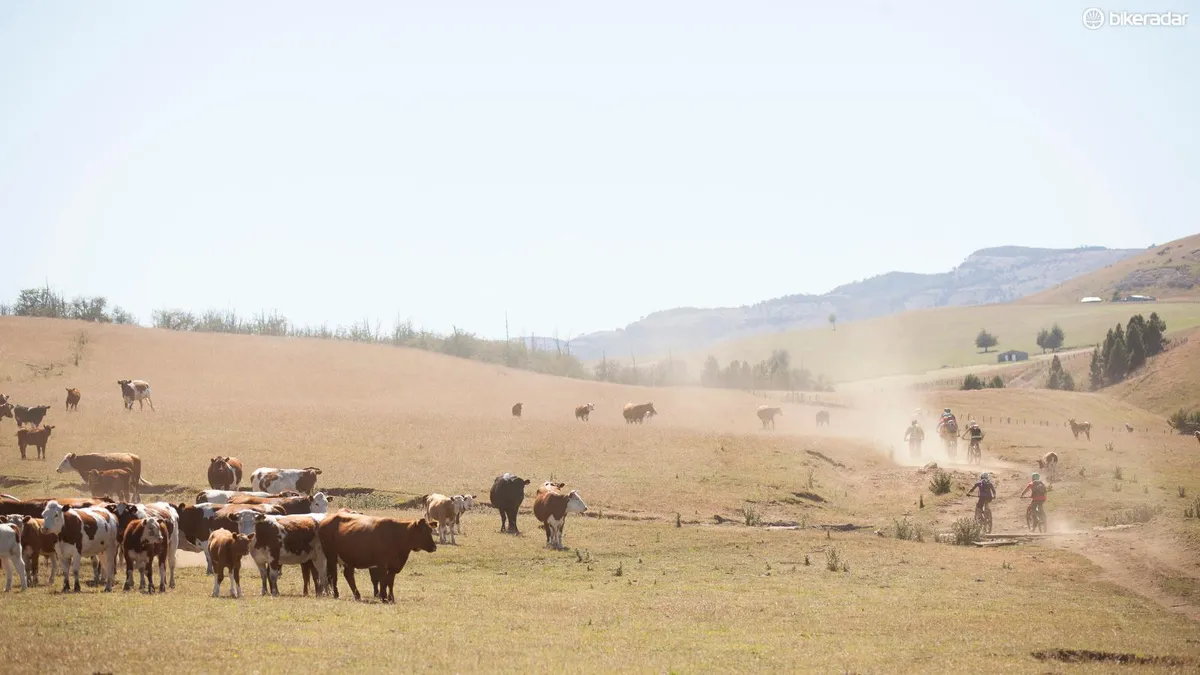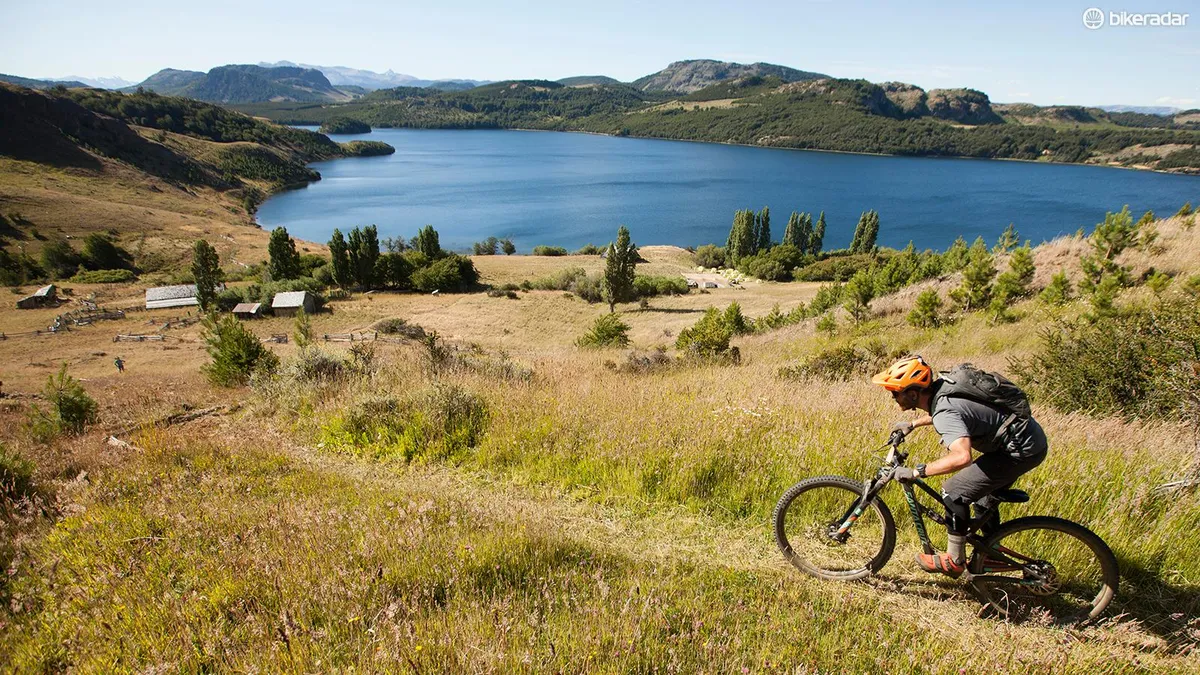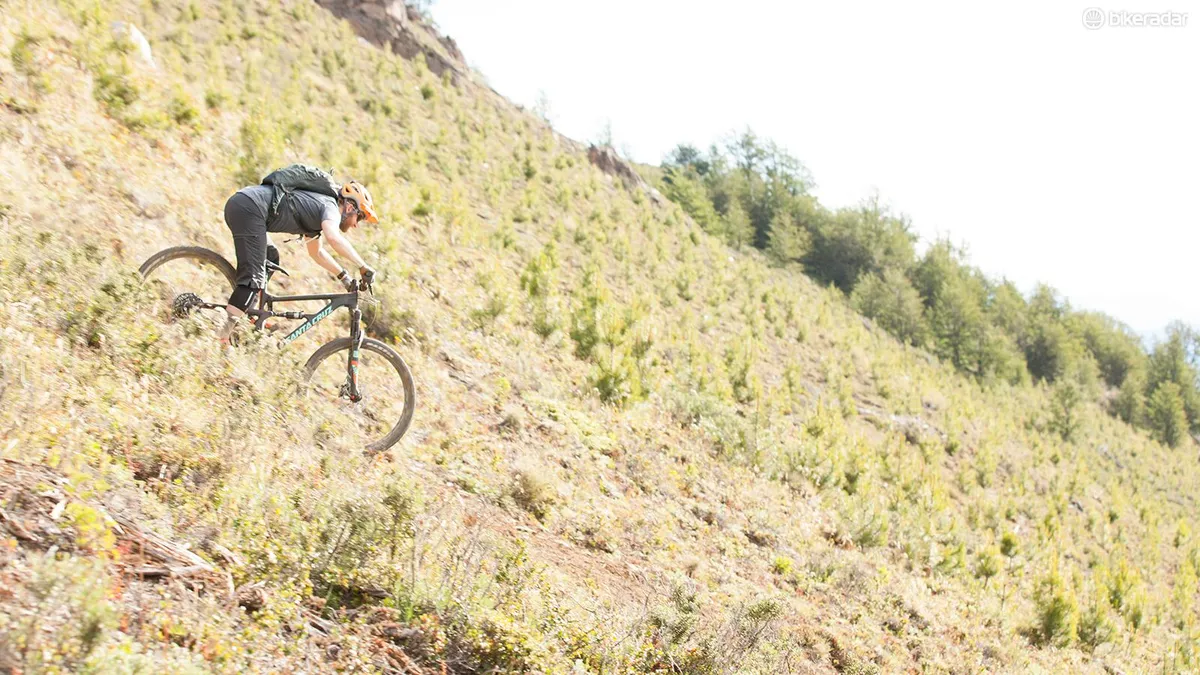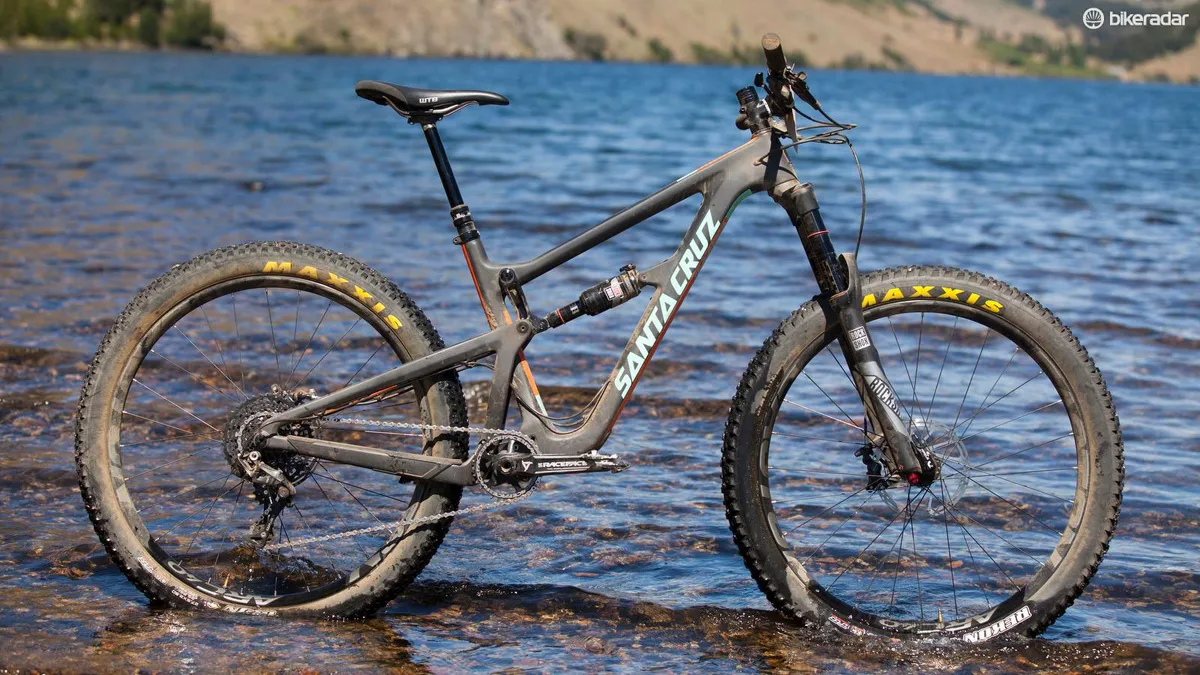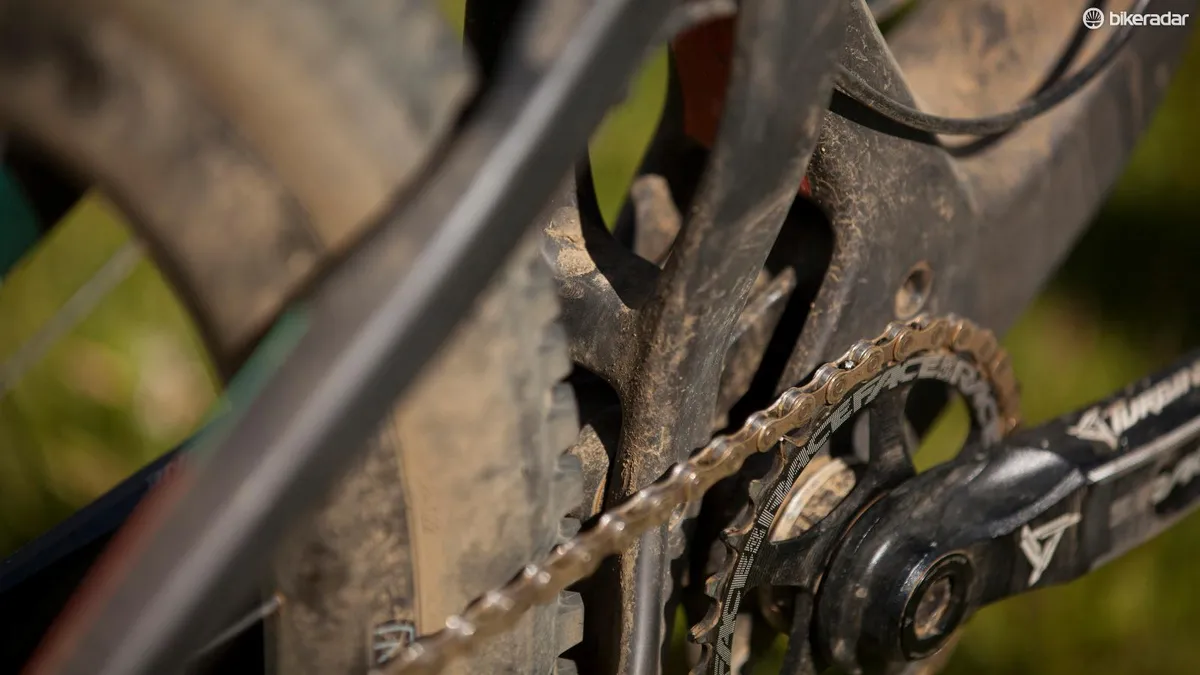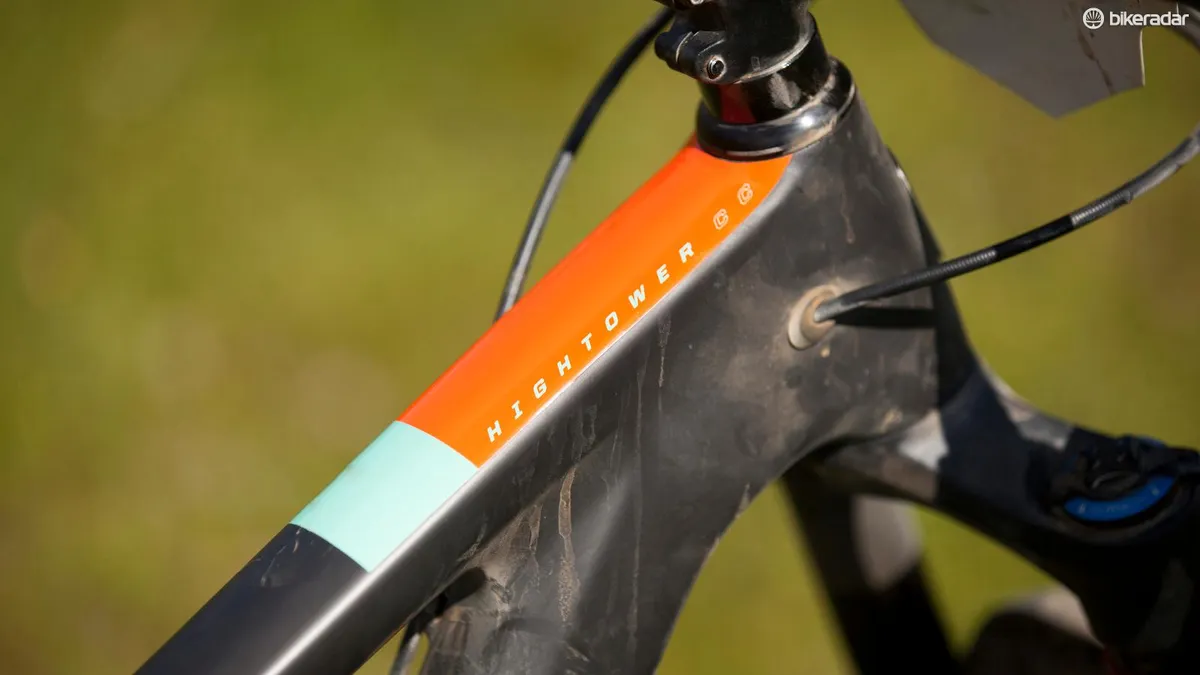An aptitude for big-mountain riding, thoughtful frame features and have-it-your-way wheel size versatility should put the Hightower on the radar of any rider seeking an aggressive trail bike.
Hightower highlights
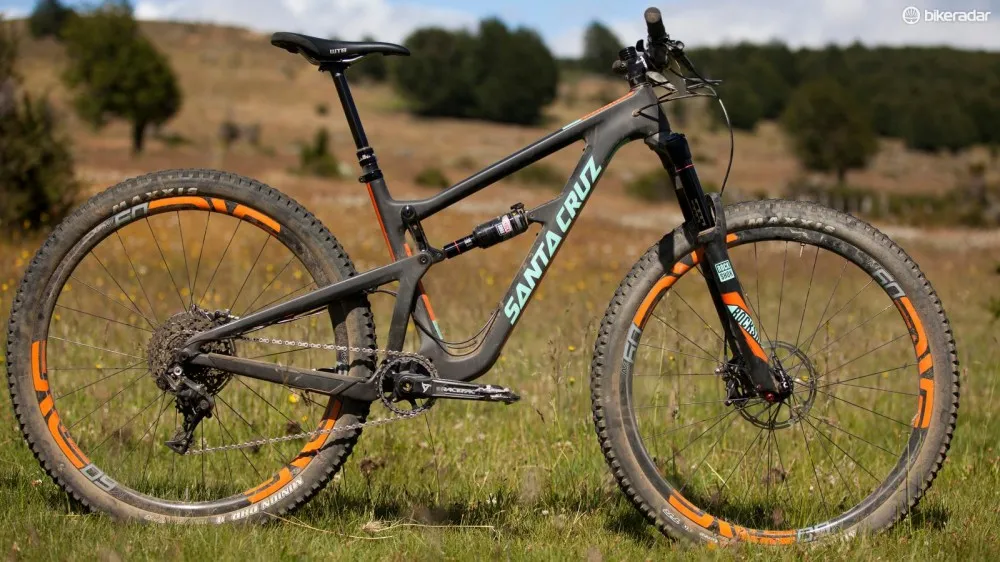
Against the relentless march of progress even the best bikes grow long in the tooth. Such was the case with Santa Cruz's well-regarded Tallboy LT, which the Hightower replaces. Aside from wheelsize and rear-suspension travel — which is still pegged at 135mm — these two bikes are vastly different machines. The Hightower's head angle is 2.5 degrees slacker and the chainstays are 15mm shorter than its predecessor.
The host of refinements introduced with the latest iteration of the Nomad and incorporated into the redesigned Bronson and 5010 are also present in the Hightower. A carbon sleeve molded into the down tube make routing a shift cable to the rear derailleur a painless procedure and the Hightower’s lower VPP link has been tucked above and behind the bottom bracket shell, shortening the rear end. The Hightower also gets a ‘boost’ 148x12mm thru-axle and a 31.6mm diameter seat tube to accommodate a 150mm RockShox Reverb dropper post, which comes stock on all six complete bikes.

The Hightower is designed for 1x drivetrains
Like the Nomad, the Hightower has ‘double wishbone’ upright braces between the seat- and chainstays to bolster rear end stiffness. This was made possible by designing the Hightower without regard for a front derailleur. So if you’re not down with single-ring drivetrains, this is not the bike for you.
Patagonia proving grounds
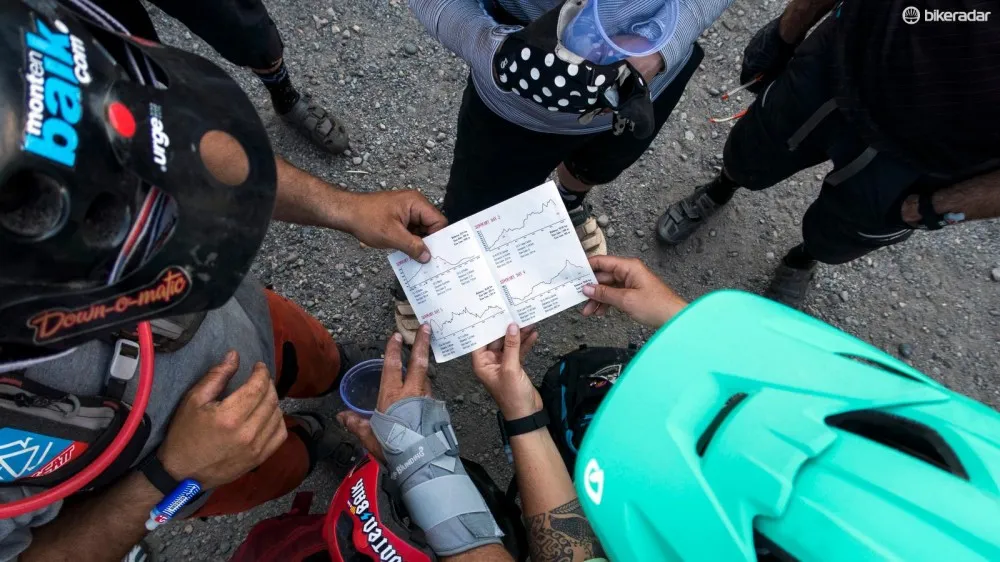
Part enduro, part cross-country stage race, this event hopes to fill a niche in mountain bike racing
Santa Cruz hosted a media launch in the Aysén region of southern Chile.
This sparsely populated landscape is dominated by sprawling sheep and cattle ranches, glacial lakes, and the ever-present Andes Mountains that form the spine of South America.
The trip was more than the typical product launch junket. It was also an opportunity to test a new race format. The promoters at Montenbaik, who, by the way, put on some of the best races in the Enduro World Series, are experimenting with a new breed of stage racing. The concept is to create a race that is burlier than the typical cross-country event, but not quite as harrowing as enduro racing has become. In short, a trail biker’s bike race.
On paper, this four-day “adventure rally” format seemed like the ideal proving grounds for a 29er trail bike.
The terrain we rode varied dramatically. We plunged down scree fields, carved through loamy forests, traversed miles of dusty plains and interloped through more than a few cow pastures.

Not all the locals were welcoming. Moooooove!
Interest in mountain biking is on the rise in South America, but trail development is still in its formative stages. Many of the rough-cut trails we rode were scratched into the earth only days before our arrival. Other times we found ourselves blazing trail with nothing to follow but the breadcrumbs on our guide’s GPS.
While less developed than the trail networks many of us are accustomed to riding, the Hightower proved to be a keen companion on these off-track explorations.
How does the Hightower stack up?
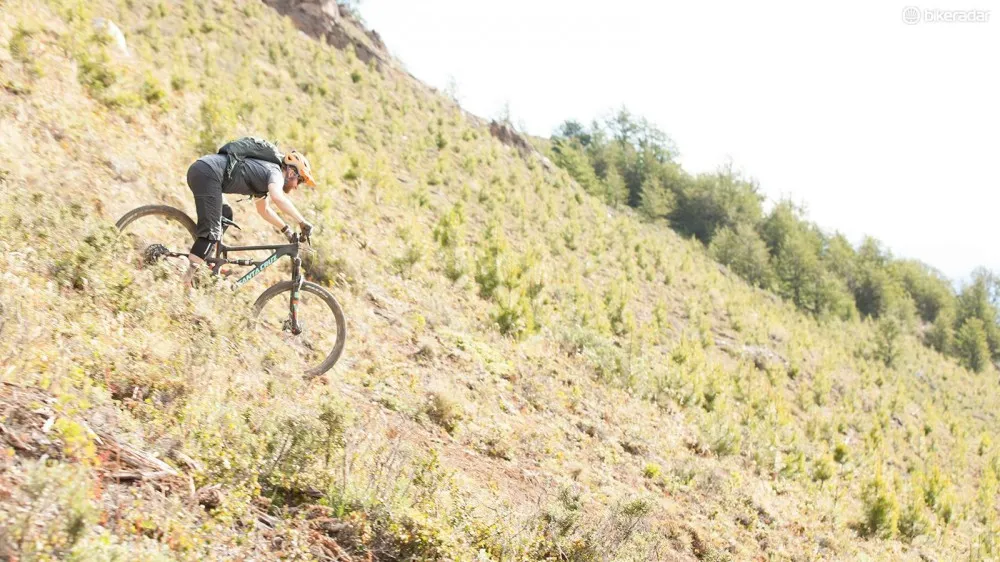
The Hightower is a thoroughly modern trail bike
In 2012, we called the Tallboy LT a “benchmark buster” for trail bike performance. The combination of agile geometry, a category-leading lightweight carbon frame, and performance-driven VPP suspension tune made the Tallboy LT a force to be reckoned with.
For the time, and in comparison to its peers, it was a revolutionary machine. It was light and possessed uncanny agility at a time when many riders as well as reviewers were still whining about the lack of nimbleness inherent in big-wheeled bikes. But times and rider preferences have shifted dramatically in the intervening years.
I threw a leg over a Tallboy LT prior to the Hightower launch so I’d have a clear point of reference in reviewing its replacement. The two bikes ride dramatically different.
In comparison to many of today’s popular 29er trail bikes, such as the Trek Remedy 29, Yeti SB4.5c, Pivot 429 Trail and Evil’s The Following, the Tallboy LT feels like a over-forked XC rig. It’s a bike that prefers to be steered from the handlebar, rather than leaned through turns like a modern trail bike, and requires the rider to swing the rangy rear end through tight turns.
In contrast to the Tallboy LT, the Hightower feels spot-on contemporary. It has a balanced, steer-from-the-saddle feel. The steep, 74.3-degree seat tube angle places the rider in a good stance for climbing and makes it easy to weight the front end to prevent wheel flop on steep climbs.
The long front center and the 67-degree head tube angle, both of which are par for the course for modern trail bikes, instill confidence at high speeds without making the Hightower feel cumbersome when navigating slow speed tech.

The Hightower is no slouch on the climbs, either
The Hightower with the stock Monarch RT3 shock pedals well in the open position with enough free stroke to serve up traction without falling victim to the dreaded mid-stroke wallow. Riders looking for more shock will be glad to know the Hightower can accommodate a piggyback shock with enough room remaining in the main triangle for a water bottle.
29 versus 27.5
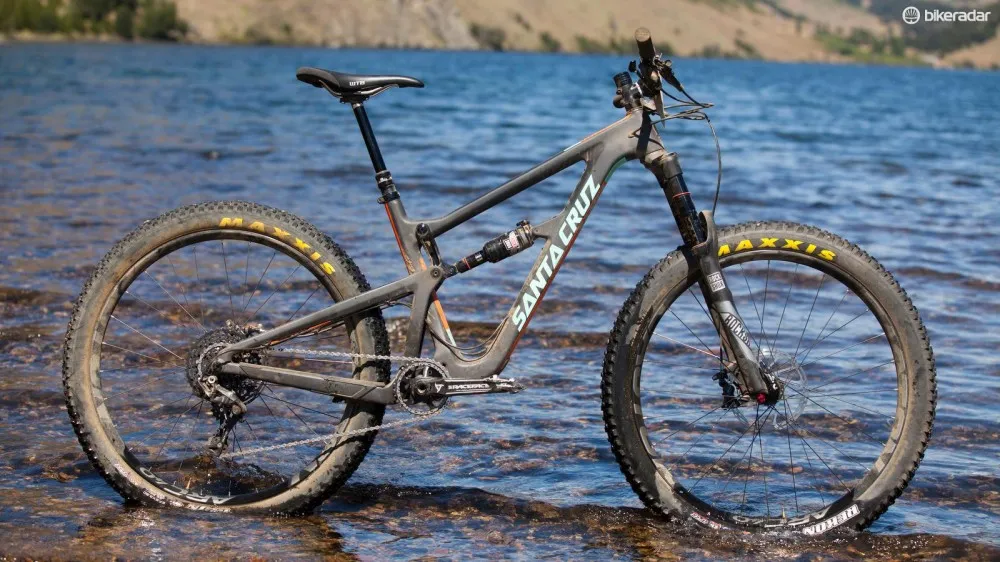
Whether you like 29er or 27.5 , the Hightower is willing to accommodate
Is it a 29er that can fit 27.5 wheels and tires, or a 27.5 bike that’s also compatible with 29in wheels? It may not matter much, because Santa Cruz offers the Hightower in three builds per wheel size.
On the third day of our Chilean adventure I rode the Hightower with 27.5 wheels and tires. Santa Cruz specs the 27.5 version of the Hightower with Easton’s ARC 40 rims laced to SRAM, DT Swiss 350 or Industry Nine hubs, depending on the build. Maxxis Rekon and Ikon tires in the 27.5x2.8 size come standard on all plus-sized kits.
According to Santa Cruz, the company prefers the performance of these slightly smaller plus-sized tires to the more voluminous, 27.5x3in size. The Hightower is able fit a full 3in plus tire, but mud clearance is tight.

Flipping this chip in the shock and swapping the 140mm fork for a 150mm fork preserve the Hightowers geometry
If you’re new to plus bikes, it’s important to note how critical finding the right tire pressure is. The envelope for optimum performance is incredibly narrow. If you’re 1-2psi too high, the ride will be bouncy. Too low and you’ll experience excessive tire squirm while cornering. After much experimentation I settled on 15psi in the front and approximately 16psi in the rear.
The ride turned out to be well-suited to the 27.5+ format. The terrain was generally rolling, with loose, rocky climbs, plenty of dusty double-track, and miles of bushwhacking with no discernable trail in sight. The climbs felt slower and overall the bike felt slightly less agile with the fatter treads. Despite this, the format certainly has merit if you’re looking to maximize traction and floatation.
This conversion from 29er to 27.5+ isn’t exactly plug and play, however. In order to keep the geometry relatively consistent between wheel and tire sizes, the rider must swap a chip located on the upper shock link and replace the stock 140mm Pike with a 150mm version. I would have preferred that Santa Cruz just sold the Hightower with a 150mm fork. Not only would this have made the 27.5+ conversion easier, it’s also the preferred setup of many Santa Cruz employees.
Verdict
If you’re looking for an efficient and capable companion for long days on rugged trails the Hightower is a willing accomplice.
